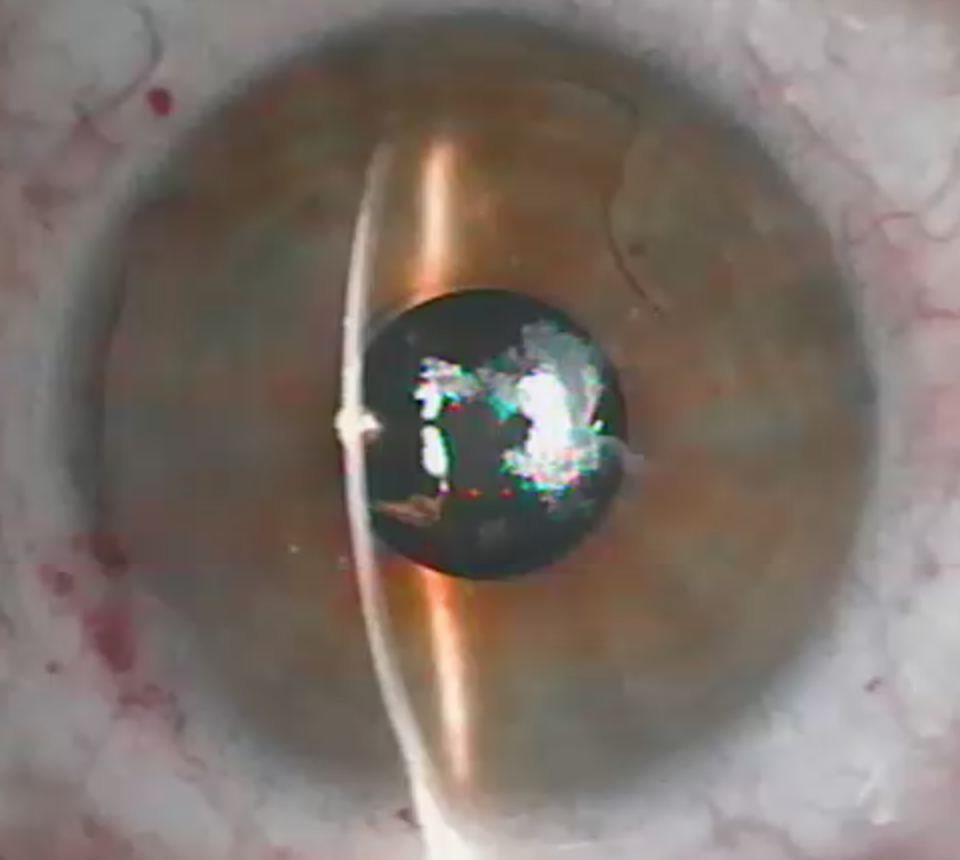Pinhole cameras are one of the earliest forms of photography and have existed since the 1800s. In fact, when you were a little kid, you might have made a pinhole camera as a science project. It’s easy to do. You take a box and put a tiny hole in one end and place wax or photo paper on the other end. The light passes through the aperture and an inverted image appears on the paper. This phenomenon is called the camera obscura effect.
The concepts behind pinhole cameras are now being applied to help people see better. The KAMRA corneal inlay uses the fundamentals of pinhole photography to correct presbyopia, or farsightedness, which typically affects people as they age. An ophthalmologist implants the inlay, which is smaller and thinner than a contact lens. It is designed to focus rays of light onto the retina of your eye much like a pinhole camera focuses light onto photographic paper.
You may be aware that one of our own Dr. Silverman’s favorite hobbies is photography – sign up for his newsletter today to get his photo of the month, along with plenty of great eyecare related information. A fellow photographer, Mike Thomas, recently underwent the KAMRA inlay procedure after finding out about its origins in pinhole photography. Bifocals simply weren’t working for him, as his profession requires him to be able to judge colors, contrasts, and clarity in the light room or in Photoshop – but after having the KAMRA Inlay surgery, his job became much easier.
Say goodbye to your cheaters
Presbyopia affects more than 114 million people in the United States and generally begins around age 45 when the lens of your eye slowly becomes less flexible. As the lens stiffens over time, it can no longer bend into the right shape to bring close objects into focus. To compensate, you end up moving objects further away to focus, or you give up and go to the drug store to pick up a pair of reading glasses or “cheaters.”
The KAMRA inlay is a mini-ring with a tiny opening in the center that creates the pinhole effect. Once the inlay is in place, you can see small text or a computer screen while maintaining your distance vision. It works long-term, so you can continue to enjoy clear vision as your presbyopia progresses over time.

What to expect at the doctor’s office
The KAMRA inlay surgery takes only around twenty minutes, and you remain awake during the procedure. You lie on your back and focus on a light above your eye, which helps you remain still. The ophthalmologist puts numbing drops in your eye and then places the KAMRA inlay in one of your eyes. Using a laser, your doctor then creates a small pocket in the first few layers of your cornea, inserts the KAMRA inlay into the pocket, and centers it over your pupil. The other eye is left untouched, but after the surgery your eyes work together to provide a full range of vision from near to far. As with many types of eye surgery, you won’t be able to drive following the procedure, so you should arrange for someone to drive you home.
Intrigued? Call us!
If you’re considering a KAMRA inlay, please contact Dr. Silverman and the OCLI team to schedule a comprehensive eye evaluation. During this appointment, we’ll discuss the risks and benefits and whether you’re a good candidate for the procedure.